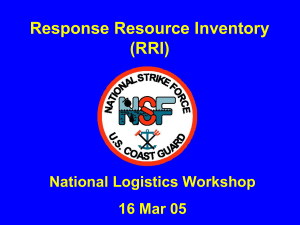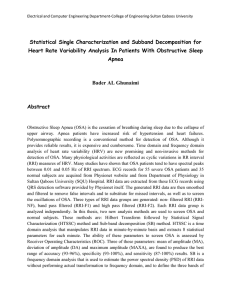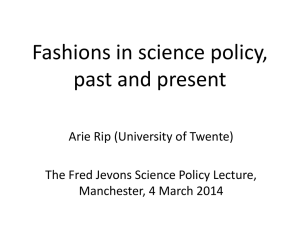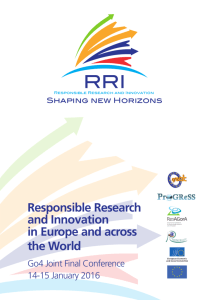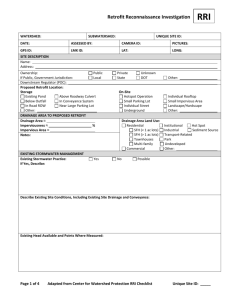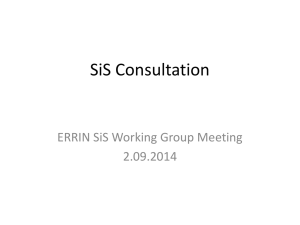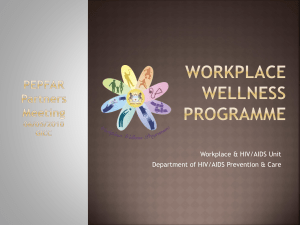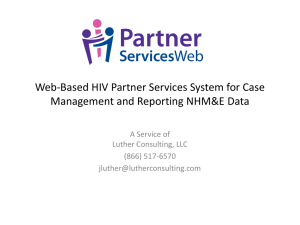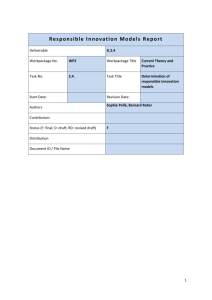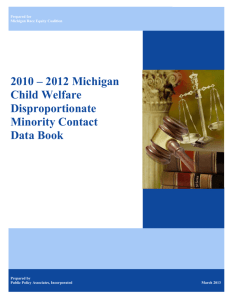Kenya male circumcision rapid results initiative
advertisement
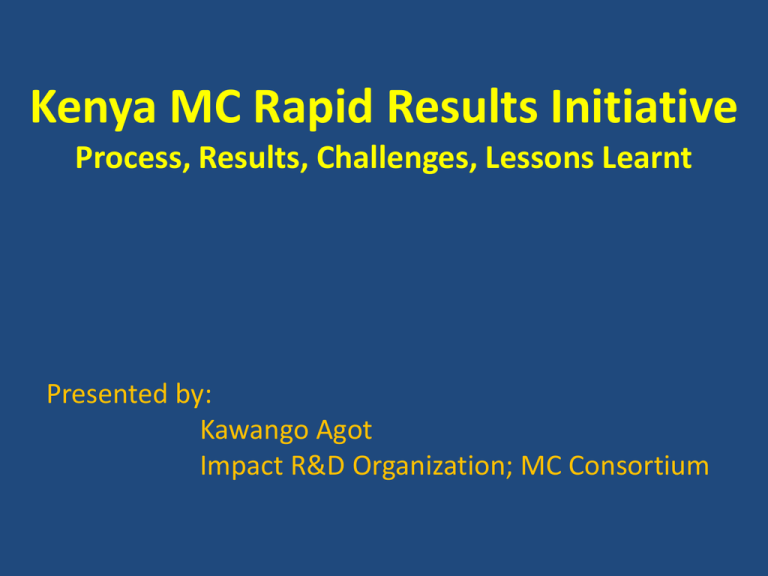
Kenya MC Rapid Results Initiative Process, Results, Challenges, Lessons Learnt Presented by: Kawango Agot Impact R&D Organization; MC Consortium Why rapid scale up of MC? • Models show large benefits of MC in low circumcision, high HIV prevalence communities, with one HIV infection averted for every 5-15 circumcisions performed over a 10 year time period. • The impact and cost-effectiveness of MC programs will depend on the HIV prevalence, the uptake of MC by adult men, and the speed with which services are scaled up. • In Nyanza Province, the current site of most MC services, it is estimated that 80% MC uptake over 10 years could result in the male HIV prevalence decreasing from 17% to 7%, and female prevalence from 22% to 10% • If scale-up could be achieved more rapidly, the impact over the same period of time would be significantly greater. Rapid Results Initiative (RRI) • RRI is a strategy used by government ministries and departments to tackle large scale change efforts through a series of small-scale, result-producing and momentum building initiatives • In Public Health in Kenya, RRI approach has typically been used to accelerate nationwide uptake of services such as immunization, HIV Testing and Counseling, etc. • Strategy applied to MC in Nov/Dec 2009, on a pilot basis: – About 40,000 were circumcised between Oct 2008 and Oct 2009 – RRI target: 30,000 circumcisions performed in 30 working days Summary of process • Set up a coordinating committee at provincial level; held several planning meetings, including with district MOH leadership to set goals and strategies; three sub-committees formed: – Service delivery (oversee staff, supplies, disinfection, M&E, etc) – Communication and Social Mobilization – Logistics (transport, funds flow, etc) • Identical coordinating structure replicated at district level • Service providers organized in teams, with experienced team leaders and district coordinators overseeing day-to-day activities • Mostly, experienced and inexperienced staff worked together • Weekly review meetings held to address challenges, make revisions • Field supervision of service provision done daily; data forms reviewed in the field weekly; forms sent to central data center for review and entry. • Exercise launched and closed by Provincial Commissioner; media present • Ministry of Education and other government ministries involved MC TARGETS BY REGION AND TIMELINE (TO REACH 80% AMONG CURRENTLY NON-CIRCUMCISED AND 94% NATIONALLY) Service package MC Service package • Counseling for MC; PITC offered on opt-out basis • Clinical examination • Management of STI and other genito-urinary conditions • Surgical excision of foreskin using forceps guided method • Post operative care • Follow up MC Service provision team (4) • • • • RCO/Nurse: Surgeon Nurse/RCO: Assistant Surgeon MC Counselor, also trained on VCT/PITC Hygiene/Infection Prevention Officer Procession during the RRI launch Banner at a health facility inviting MC clients MC educ/consenting; PITC (Note: staff is female) Provincial Director of Health at a MC site Summary of RRI results • 36,077 MCs performed in 30 working days. • 28,672 (78%) done by two partners in seven districts: – An average of 10.2 MCs (range 8-12) done per team daily – 39% of men tested at MC venues; 17% tested as part of but prior to RRI (56% total); 3% were HIV infected. – 55% MCs done on ≥15 year-olds; 23% among 12-15 yearolds. – AE rate was 1.9% (1.83% moderate, 0.05% severe); however, of the 6,595 who returned for f/u visits, 8.4% had AEs. – Follow-up rate at the MC venues was 23%. Key challenges • Obtaining parental consent for minors, especially 15-17 year-olds. • Sustaining demand for services erratic, and marked fluctuations interfered with staff and supplies allocation. • Lower than expected rates of testing (56%) and sevenday follow-up (23%). • Availability of MOH staff unpredictable at times, affecting planning especially in mixed teams (MOH + non-MOH). • National data tools not out at the time and all partners did not use identical forms, hence limited ability to compare all data across partners. Key lessons learnt • Effective in increasing MC service uptake and program roll out. • Built momentum for increased public support for and normalization of MC (there was high demand by parents in urban centers for circumcision of young sons). • The public ready for MC, esp. if services are taken close to them. • MC services can be provided safely in diverse settings. • RRI for MC is cost effective (US$ 39 during the RRI vs. US$ 86 in the preceding 13 months, thus a 56% saving). • Social mobilization for stable client flow is the most important determinant of efficiency. • Engaging non-health depts, other NGOs and all sectors of community could make MC a movement in Nyanza rather than just a public health exercise. Recommendations • Expand MC services within and beyond the formal health sector to address unmet demand • Adopt RRI as a strategy for scaling up MC (for short periods to reduce staff burnout) • Conduct integrated RRI for MC and HTC for greater impact • Re-engineer MC messaging to increase uptake by older, sexually active men • Invest more resources in social mobilization for MC uptake • Reduce emphasis on post operative follow-up as a measure of MC program success • Put in place equipment, supplies and coordination strategies prior to start-up; monitor quality of services/data frequently Acknowledgements • • • • Nyanza Community and Political Leadership. Ministry of Public Health and Sanitation Ministry of Medical Services MC Partners: – – – – Impact Research & Development Organization (CDC) Nyanza Reproductive Health Society (CDC) Family AIDS Care and Education Services (CDC) APHIA II Nyanza, including Engenderhealth (USAID) – Catholic Medical Missions Board (CDC) • • • • National & Nyanza Provincial Male Circumcision Taskforces Family Health International Nyanza Provincial Commissioner and Provincial Administration PEPFAR (CDC, USAID) Thank you!! Ensure you visit: www.malecircumcision.org
